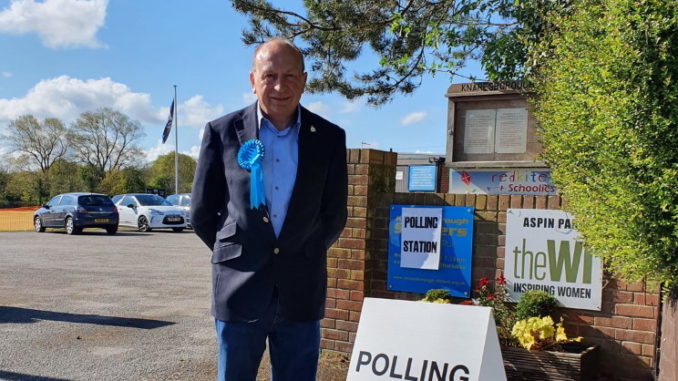
Public relations firm boss Philip Allott has pledged to be “a broad church” and tackle a wide range of concerns after being elected Police, Fire and Crime Commissioner for North Yorkshire.
With a turnout that was the highest since the post of police and crime commissioner was created in 2012, the Conservative candidate took 47 per cent of the first preference votes – falling short of the requisite 50 per cent – but secured re-election on second preference votes.
After several recounts it was announced he had secured a total of 83,737 first and second preference votes, over 30,000 more than his nearest rival Labour’s Alison Hume.
The first round of voting had seen Liberal Democrat James Barker with 19,773 votes and Independent candidate Keith Tordoff with 22,308 votes eliminated.
As the result over who would have oversight of the police and fire services in the county was announced in the sports hall at Selby College, Mr Allott, who runs a public relations and marketing agency, said he would take on the issues that his rival candidates had raised while campaigning.
He said: “We live in the best county in England and I hope to make it an even better county.”
The run-up to the vote had seen little friction between the four candidates and there appeared to be little tension among them as the votes were counted.
With the exception of Harrogate district, the result in each of the North Yorkshire districts was the same with Ms Hume coming second in each of the first counts, Independent candidate and Pateley Bridge sweet shop entrepreneur Keith Tordoff has received the third most votes in each area. Harrogate saw Mr Barker come second.
Returning officer Janet Waggott has said there had been 160,025 votes verified for the North Yorkshire and York area, meaning 25.47 per cent of electorate, higher than the 22 per cent five years ago and almost double that of 2012.
Onlookers said they had been left puzzled as to why some areas saw larger turnouts than others. The rural district of Craven, which includes part of the Yorkshire Dales National Park, saw 29.6 per cent of the electorate turn out, while the similarly rural district of Richmondshire, on the other side of the park saw just 23.8 per cent of the electorate vote.
The areas with the largest urban populations, York, Harrogate and Scarborough, saw turnouts of 24.1 per cent, 27.4 per cent and 22 per cent respectively.
Ms Hume, a York-based lecturer and disability campaigner, said she was proud at having run a positive campaign. She welcomed Mr Allott’s pledge to tackle the issues she had raised, and said she looked forward to seeing action over the “epidemic of violence against women and girls”.
Mr Barker, a City of York councillor with 24 years of military service, said: “I am pleased with the amount of votes I got, which was 6,000 more than the previous Liberal Democrat candidate for this role. I came here with two aims. Not to lose the deposit and to increase the count and we have achieved this.”
After the first count, Mr Tordoff said: “I am obviously disappointed because I came to win, but to come third is pleasing and over 22,000 people in North Yorkshire voted for me as first preference. It was always going to be a Herculean task against the main political parties.”


Be the first to comment